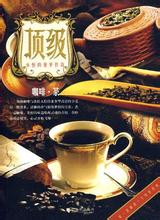Introduction to the description of taste and flavor of coffee beans treated by sun exposure
Characteristics of sun treatment of coffee beans description of taste and flavor
1. Natural solarization (Natural/Dried-in-the-Fruit)
The process of this method is the simplest. The fruit begins the process of sun drying without treatment after picking. This is the oldest method of treatment in existence. This method is still used in places such as Ethiopia and Brazil. Natural solarization is most common in areas where water resources are scarce. The drying process usually lasts about 4 weeks. The method of handling must be very strict to ensure that the coffee does not lose any flavor. The natural sun method requires the local climate to be extremely dry. In some areas, people use dryers to assist in the drying process of coffee fruit (the hot air of the dryer can speed up the drying process and help people control the degree of drying).
Natural sunlight can retain the fruity aroma of coffee fruit. When you taste this kind of coffee, you will find that the coffee has a fruity aroma and a brighter taste. After drying, people will use special machines to remove the shell of the surface layer. This process is called drying and shelling (Dry Milling).
two。 Washing method (Washed)
In the process of washing, the peel and pulp of the fruit are treated with a special desizing machine and the coffee beans are peeled off. The coffee beans then enter the fermentation tank for fermentation treatment so that the mucous membrane is no longer sticky. The sugars in the mucous membrane are decomposed during fermentation. Depending on the fermentation method, the fermentation time is usually 12 hours to 6 days (some growers use the watering system to ferment coffee beans. This method is called the Kenyan washing method (Kenyan method) and usually lasts for several days). It is extremely important to decide when to stop fermentation. Once the coffee is overfermented, the taste of the coffee will become too sour. Once the sticky material in the mucous membrane is decomposed, it will be washed down with a lot of water. (the waste water from the raw bean treatment process is considered to be the source of pollution in the coffee industry. Today, advanced technologies are being developed in many areas to recycle and filter the waste water produced by this process. Water shampoo was born in the 19th century, also known as "wet processing".
A tightly controlled fermentation process increases the acidity of the coffee and is reflected in the final taste of the coffee. But as long as the coffee is washed immediately after the fermentation process, the taste of the coffee can be improved and has a bright sour taste.
3. Natural washing (Pulped Natural)
This method is extremely common in Brazil. The natural washing method is very similar to the water washing method, except that the natural washing method uses a high-pressure washing machine to remove the mucous membrane of the coffee surface, thus skipping the fermentation process. Several raw coffee processing companies in Brazil and Colombia have patented this method and have become local natural water system processing monopolies. The amount of water used in this method is much lower than that of washing hair, so some people are used to calling it "semi-drying (Semi-Dry)". Because there is no fermentation, coffee beans do not exist (or only have a very low risk of fermentation), and the overall quality of coffee is more constant. Unfortunately, the taste of coffee tends to be flat because it is not fermented. As a result, growers will not use natural washing for ultra-high quality coffee beans. Most raw bean purchasing companies also rarely buy coffee processed by natural washing.
4. Honey treatment method
Today, honey treatment is used in almost all the producing areas of Costa Rica. This method is also widely spread throughout Central America. Because the surface mucosa of coffee beans is extremely slippery and the sugar content is extremely high, it is often called "honey". In the process of honey treatment, coffee will leave some or all of the "honey" when it is dried. After the coffee fruit is picked, graded and peeled, it is placed on a drying bed to dry.
Because the drying time of the mucous membrane is very short, coffee beans hardly ferment during the drying process. The acidity of coffee beans processed by this method is slightly higher than that of natural washing, but much lower than that of natural washing and natural sun processing.

Important Notice :
前街咖啡 FrontStreet Coffee has moved to new addredd:
FrontStreet Coffee Address: 315,Donghua East Road,GuangZhou
Tel:020 38364473
- Prev

What is the reason why the temperature of coffee extracted by coffee machine is too low?
Why is the coffee machine extracting coffee too low? after the essence of the winning Bureau experienced the correct picking, production and roasting, it came to the last two gates of import, grinding and extraction.
- Next

What is the reason why there are so many small bubbles on the surface of milk after drawing flowers?
After drawing flowers, there are many small bubbles on the surface of milk. the steam outlet mode of the steam pipe is mainly divided into two types: the external expansion type and the centralized type. Different forms of steam pipe, the steam intensity and steam output will be different, coupled with the change of the position of the outlet hole and the number of holes, it will cause the difference between the angle and the way when milking. And the expanded steam pipe is sending off the cattle.
Related
- What is the meaning of lactic acid fermentation with coffee bean treatment?
- How to judge the state of foam by sound?
- How does the latte pull out the unicorn pattern? Come to get for a little trick to improve the flower pull!
- Will flower pulling affect the taste of the latte?
- Do you know the history of coffee?
- The difference between honey treatment and sun washing what is raisin honey treatment?
- What kind of milk can a novice use to make coffee foam to keep the foam longer? The correct method and skills of milking tutorial sharing
- Why do washed coffee beans taste sour? Flavor characteristics of washed Coffee
- Introduction to the skill of how to practice the size and height of water injection around the circle of hand-brewed coffee
- How do beginners practice coffee flower drawing from scratch?

